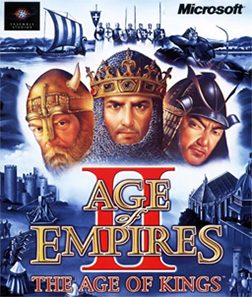Age of Empires: The Evolution of a Strategic Empire
For over two decades, the Age of Empires series has stood as a pillar in the real-time strategy (RTS) genre, captivating millions of players with its blend of historical accuracy, strategic depth, and engaging gameplay. From its humble beginnings in 1997 to its continued relevance today, let's explore the journey of this legendary franchise that has let players rewrite history from the comfort of their desktops.
The Birth of a Dynasty: Age of Empires I
Released in 1997 by Ensemble Studios and Microsoft, the original Age of Empires transported players back to the Stone Age through the Iron Age (10,000 BC to 200 BC). Players could choose from 12 civilizations including Egyptians, Greeks, and Babylonians, each with unique units and bonuses.
What made Age of Empires revolutionary was its balanced approach to resource management, military strategy, and technological advancement. Players needed to gather resources (food, wood, gold, and stone), construct buildings, advance through historical ages, and ultimately defeat their opponents through military might or by constructing a Wonder of the World.
The game's historical consultant, Sandy Petersen, ensured that civilizations, units, and technologies maintained a reasonable degree of historical accuracy while still providing engaging gameplay.
The Golden Age: Age of Empires II
The HD Edition (2013) and Definitive Edition (2019) breathed new life into this classic with enhanced graphics, quality-of-life improvements, and new civilizations. Perhaps most impressive is how active the AOE II community remains today, with tournaments still drawing significant viewership.
Colonial Expansion: Age of Empires III
The game's three expansions—The WarChiefs, The Asian Dynasties, and the later Definitive Edition's addition of African civilizations—showcased the global scope of the colonial period and added Native American, Asian, and African civilizations to the European powers.
Modern Renaissance: Age of Empires IV
Its documentary-style campaign presentations and civilization-specific mechanics breathed fresh air into the series while maintaining the core gameplay that fans loved.
Beyond Gameplay: The Cultural Impact
Age of Empires has transcended being merely a game to become a cultural touchstone for many:
- Educational Value: Many players credit the series with sparking their interest in history, geography, and military strategy.
- Accessibility: The series balances depth for hardcore strategists with accessibility for casual players.
- Community Longevity: Few gaming communities have shown the resilience of Age of Empires, with dedicated players maintaining active scenes for decades.
- Memes and References: "Wololo" (the sound priests make when converting enemy units) has become a recognizable reference in gaming culture.
What Makes Age of Empires Timeless?
Several factors contribute to the enduring appeal of the Age of Empires series:
- Historical Authenticity: The games strike a balance between historical accuracy and engaging gameplay.
- Strategic Depth: Multiple victory conditions and approaches to gameplay ensure no two matches feel exactly alike.
- Satisfying Progression: The age advancement system provides a tangible sense of growth throughout each match.
- Varied Civilizations: Each civilization feels unique without breaking game balance.
- Continuous Support: Microsoft's commitment to updating older titles has kept the entire series relevant.
The Future of Empire Building
With Age of Empires IV receiving regular updates and older titles still maintaining active player bases, the future looks bright for the franchise. Microsoft's commitment to the series suggests we haven't seen the last of Age of Empires.
Whether you're a nostalgic veteran who remembers the original release or a newcomer curious about this storied franchise, there's never been a better time to dive into Age of Empires. From its historical campaigns to its competitive multiplayer scenes, these games offer something for everyone who's ever dreamed of building an empire that stands the test of time.
So gather your resources, advance your civilization, and prepare for battle—history awaits your command!
What's your favorite Age of Empires game or memory? Share in the comments below!




